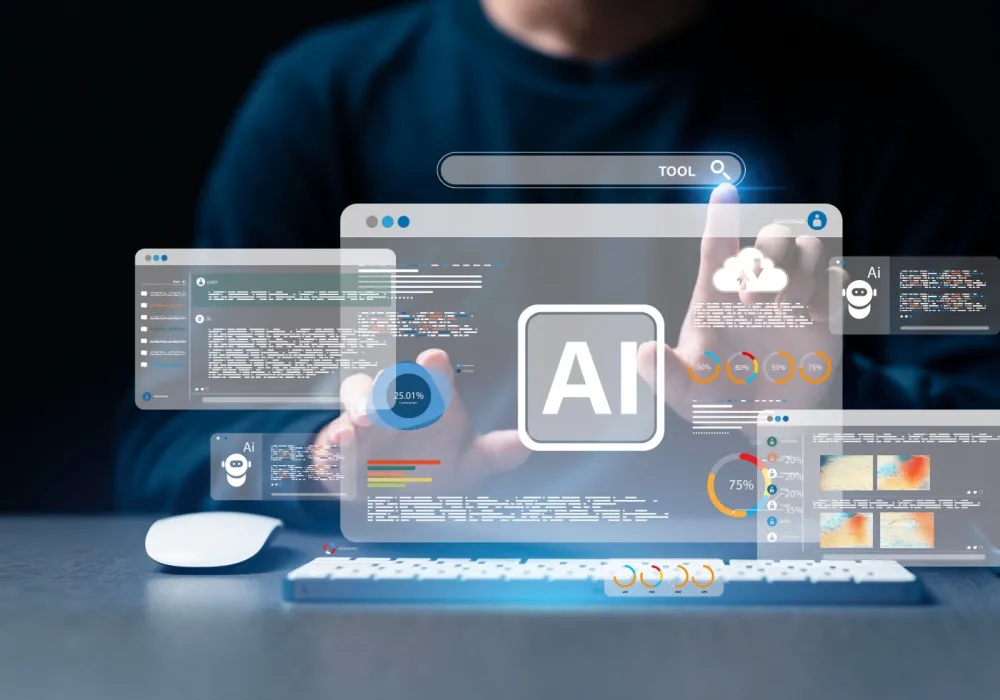
Over the last year, the hype surrounding Artificial Intelligence (AI) has risen to new levels. New technologies like ChatGPT demonstrate the potential of AI in a wide variety of fields — and benefits administration is among them.
However, while many vendors have spoken at length about how they’re “using AI,” it’s often unclear exactly how. More importantly, it’s unclear what advantages employers and benefits administrators can expect from AI in the coming years.
We’ve seen the web revolution, the smartphone revolution…now we’re in the AI revolution. In fact, Gartner has positioned Generative AI on their Hype Cycle for Emerging Technology’s Peak of Inflated Expectations, expecting it to reach transformational benefit within two to five years. Here's my take on what this might mean for benefits professionals and the people they serve.
Why is Everyone So Excited About AI?
Despite early enthusiasm, many technologies fail to live up to their promise. Delivery drones, fully autonomous vehicles and virtual reality are all examples of technologies that promised to change industries — even the world — but, so far, have delivered very little.
But why are people so confident that AI is the next smartphone… and not the next flop? There are a few reasons:
- AI and related technologies like Machine Learning (ML) and automation are already changing the face of many industries — from customer service through to software development and medical research.
- Recent improvements to Large Language Models (LLMs) are enabling companies to produce highly personalized communications, messaging, and recommendations for individual employees and customers — all in the user’s native language. This is already being used to improve everything from sports performance devices to medical testing to business software.
- AI and related technologies are the key to unlocking the (largely unfulfilled) promises of big data. Up until now, most industries have been unable to fully harness the business value — financial and operational — of their huge datasets. ML, in particular, is already beginning to solve this problem, allowing companies to generate insights from truly enormous datasets.
Top Three Predictions for How AI Will Improve Benefits Administration
1. Removing friction from incentives
In theory, incentives are a great way to boost employee engagement. But, historically, they have added friction to the user experience. They often require additional systems that employees must use and manage, with extra logins and unclear processes. These systems rarely share access to data. They also use different data sets altogether — making life frustrating for employees, who have to navigate past irrelevant content on a variety of different platforms.
This can end up being so overwhelming that employees don’t take advantage of the incentives available to them, causing programs to underperform. My personal mission – and that of Benefitfocus – is to make people's lives better with software. And you don't make people's lives better by making it complicated – you do it by making it simple.
This is one area where AI is already showing promise: bringing disparate systems together into a single, simplified experience that guides users through:
- Things they need to do, like getting their annual enrollment done.
- The things employers want to incentivize them to do.
- Things employers want to engage them with throughout the year.
2. Boosting employee engagement
Many modern benefits programs offer a lot of value… but only if employees engage with the benefits ecosystem. Sadly, in many cases, they don’t.
When employers look at usage stats, they typically see that the majority of users log into their benefits platform exactly once per year. They log in to do their open enrollment and are never seen again. Unless that paradigm can be changed, it will be tough for employers to increase the value their benefits program provides to employees.
AI can potentially play a disruptive role here by engaging employees with tailored updates and suggestions — delivered via the channels they are proven to engage with.
AI can learn how individual employees respond to different communications and prompts and provide tailored updates, suggestions and even predictions of how much value additional or replacement benefits could provide them.
This is far more likely to prompt higher rates of engagement compared to a one-size-fits-all communications approach that may end up showing employees a lot of irrelevant information or persevering with channels that aren’t effective.
3. Enhancing employee experience
Employee experience is critical to the success of any benefits program, and it's our #1 focus in 2024 and beyond — particularly when it comes to AI. The “winners” in this arena will be those employers who help employees see the true value of the plans they offer and make better health decisions.
Success comes down to simplicity and personalization. Most employers have a vast amount of employee information — demographic, geographic, eligibility, enrollment, claims and more — but have so far been unable to leverage it to improve benefits performance.
This is where the personalization aspect of AI comes into play. What’s been called “personalization” up to this point in benefits administration will be eclipsed by what’s possible with AI.
Think about it like this. Employees only really care about what’s valuable to them. It’s great to offer a broad range of benefits, but they don’t want to trawl through a mountain of irrelevant benefits to find what’s important to them. This type of overwhelm has the opposite effect to what employers want — it dissuades employees from engaging and may even cause them to feel resentful about all the money being spent on benefits that aren’t useful to them.
AI can direct employees to what they are and might be interested in. As with modern consumer websites like Amazon, users could have a benefits experience based on personalized data and usage that provides suggestions that are “scarily accurate.”
Similarly, the same technology can be used to predict which benefits, services and incentives may become relevant to an employee 3/6/12 months in the future, ensuring they are prompted to consider these before they become essential.
Getting it Right
Getting this right will help employers highlight the value offered by their benefits program without overloading employees with irrelevant information… and this ultimately is what will help employers attract and retain the top talent they seek. After all, it’s not the pure value offered by a benefits program that counts… It's employees’ perception of that value that will truly move the needle for employers.
It's important to note that AI can also make mistakes. It can be compared to a five-year old that has read everything on the Internet – soaking up all the knowledge but none of the wisdom. That’s why software developers need to be careful to set guardrails, rigorously training and testing the technology that’s put in front of customers. We need to be sure that the AI-powered solutions provide dependable, “truthful” and confident output.
Our Approach to Innovation
As part of an entire organization of innovators, a cross-functional team at Benefitfocus is excited to be working to further the new revolution to deliver AI-powered software to our customers. We have been designing an architecture and customer experience leveraging emerging tech that will add value by simplifying the benefits experience. Our User Experience (UX) team, for example, is researching the best way to integrate AI technology into existing applications to help bring users along as we transform from traditional applications to a fully hyper-personalized, generated experience. Working on modeling data in a thoughtful and deliberate way to ensure that AI will be used safely and in the right places, we are also learning how to test these new systems to validate that the results meet our high standards of quality and accuracy to protect our clients.
Artificial intelligence (AI) may pose inherent risks, including but not limited to: issues with data privacy, intellectual property, consumer protection, and anti-discrimination laws; ethics and transparency concerns; information security issues; the potential for unfair bias and discrimination; quality and accuracy of inputs and outputs; technical failures and potential misuse. Users of AI-based technology and tools should take these risks into consideration prior to use of the technology.



